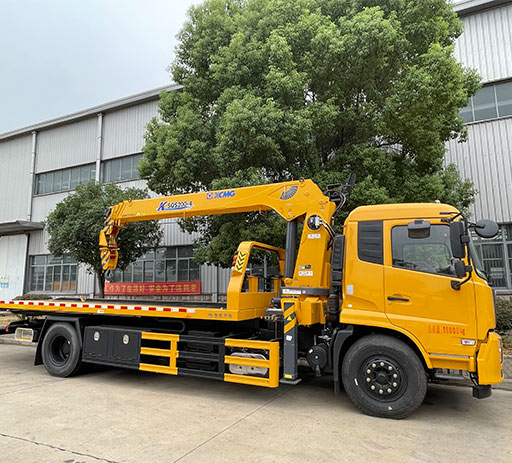Sewer Trucks: An In-Depth Guide to Their Functionality, Types, and Maintenance
Sewer trucks play an essential role in maintaining urban sanitation and wastewater management. These specialized vehicles are used by municipalities and service providers to clear blocked sewer lines, maintain septic systems, and transport waste. Understanding the functions, types, and care for sewer trucks is vital for anyone involved in this field or affected by sewer maintenance.
What are Sewer Trucks?
Sewer trucks, also known as vacuum trucks or sewage trucks, are heavy-duty vehicles equipped with powerful vacuum systems designed to remove waste from sewer lines, septic tanks, and drain fields. These trucks are built to handle hazardous and non-hazardous liquid waste, making them crucial in municipal sanitation services.
The Mechanism of Sewer Trucks
Understanding the mechanism behind sewer trucks helps appreciate their efficiency. The key components of a sewer truck include:
- Vacuum Tank: A large tank that holds wastewater and debris collected from sewer lines.
- Pump System: A powerful pump that creates a vacuum to suck up waste from the sewer.
- Dumpsite Equipment: Equipment to safely unload the collected waste at treatment facilities.
Types of Sewer Trucks
Sewer trucks come in various configurations, each suited for specific tasks. The major types include:
1. Vacuum Trucks
Vacuum trucks are designed specifically for extracting liquids and semisolids from tanks and drainages. They are commonly used for:

- Septic tank pumping
- Drain cleaning
- Catching spills
2. Combination Trucks
Combination trucks feature both vacuum and high-pressure water jetting systems. They are particularly effective for:
- Cleansing sewer lines
- Clearing blockages using water jets
3. Jetting Trucks
These trucks utilize high-pressure water jets to clean out the sewer lines without the need for vacuum suction. They are suitable for:
- Regular maintenance of sewage pipes
- Breaking up tough clogs
4. Transport Trucks
Transport trucks are used mainly for moving liquid waste from one location to another, commonly applying to:
- Transferring waste to treatment facilities
- Absolute emergency spill responses
Key Features of Sewer Trucks
When considering sewer trucks, several key features must be taken into account:
1. Tank Capacity
The capacity of the vacuum tank generally ranges between 1,000 to 8,000 gallons, depending on the size and type of the sewer truck.
2. Hose Length and Diameter
| Hose Diameter | Common Applications |
|---|---|
| 3 inches | Small blockages |
| 4 inches | Standard sewer cleaning |
| 6 inches | Large industrial tasks |
3. Pumping Power
The pump’s suction power is critical for the truck’s efficiency. Most sewer trucks operate with a vacuum pump generating between 15 to 28 inches of Hg (mercury).
4. Safety Features
Safety features in sewer trucks include:
- Emergency shut-off systems
- Overfill alarms
- Handling equipment for hazardous materials
Essential Maintenance for Sewer Trucks
Regular maintenance of sewer trucks is crucial to ensure their optimal functioning.
1. Daily Checks

Before using the sewer truck, perform daily inspections that include:
- Checking the vacuum tank for leaks
- Inspecting hoses for wear and tear
- Ensuring all safety features are operational
2. Scheduled Maintenance
Scheduled maintenance includes:
- Changing oil and filters regularly
- Inspecting various pumps and mechanical parts
- Cleaning and testing the vacuum system components
3. Cleaning the Vacuum Tank
After each job, the vacuum tank should be cleaned to remove any leftover waste materials. This helps maintain the vehicle’s lifespan.
4. Record Keeping
Keep detailed maintenance records to help track the intervals of services and repairs, giving insight into potential future issues.
Practical Examples of Sewer Truck Use
Various situations demonstrate the usability of sewer trucks:

1. Urban Blockage Issues
In a city with dense populations, sewer trucks may be summoned to clear a major blockage caused by debris. The impact of rushing water can deepen this blockage, requiring the combination jetting truck for effectiveness.
2. Rural Septic System Maintenance
In rural areas, homeowners often rely on vacuum trucks to pump out septic tanks. Regular maintenance prevents overflow issues and sustains the health of the system.
3. Emergency Spill Response
In instances of hazardous material spills, specialized transport trucks can quickly and effectively contain and transport waste to prevent environmental damage.
Choosing the Right Sewer Truck for Your Needs
Selecting the type of sewer truck suitable for a particular job involves analyzing factors such as:
1. Job Type
Identify if the task requires vacuum suction, water jetting, or both.
2. Load Capacity
Evaluate the load capacity needed. For large industrial jobs, choose trucks with larger tanks.
3. Budget Consideration
Factor in your budget for both acquisition and maintenance of the truck.
FAQ Section
1. How often should sewer trucks be maintained?
Regular daily inspections and scheduled maintenance every 3 to 6 months are recommended to ensure optimal performance and safety.
2. Can sewer trucks handle hazardous waste?
Yes, specialized sewer trucks are equipped to handle hazardous waste materials following appropriate regulations and safety protocols.
3. What should I do if I notice a sewer blockage?
If you notice a sewer blockage, contact your local sanitation services to have a sewer truck dispatched to handle the issue effectively.
4. Are sewer trucks environmentally friendly?
Most modern sewer trucks are designed to minimize environmental impact, employing advanced technology to avoid spills and manage waste responsibly.
5. How do I ensure the sewer truck is safe for use?
Perform daily safety checks, ensure compliance with all regulations, and keep the maintenance logs updated for transparency.
